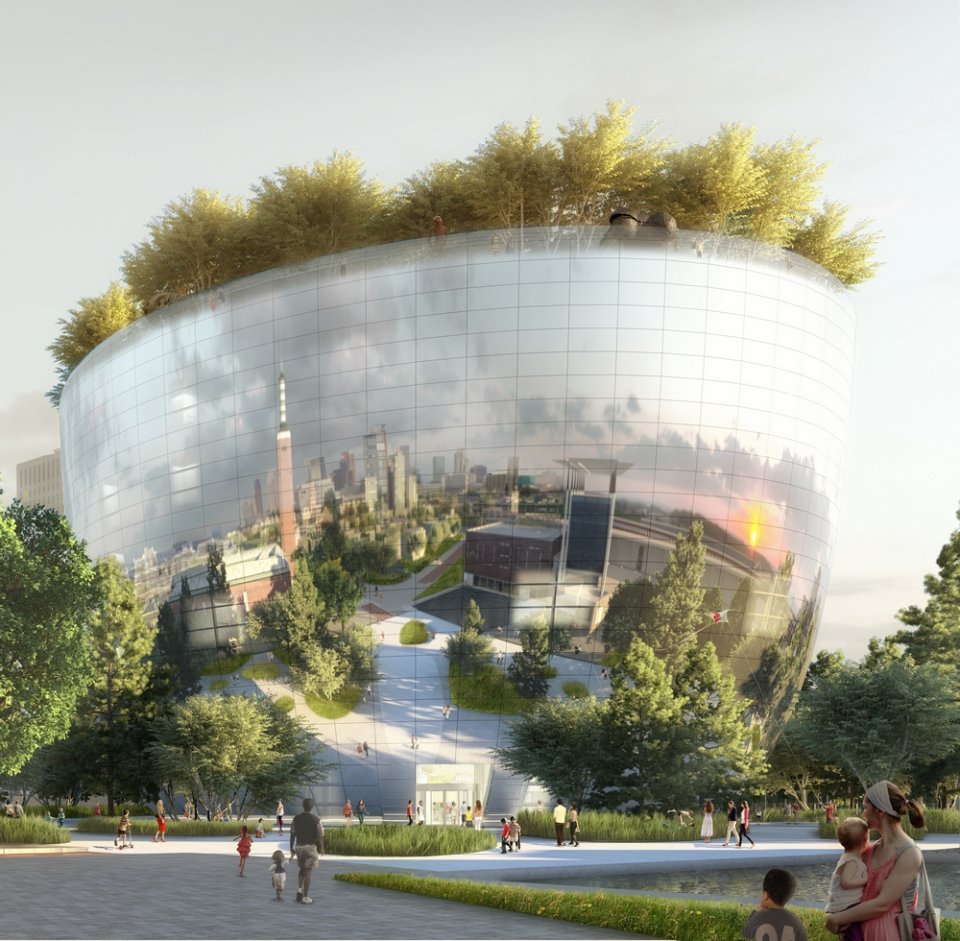
The GREEN DEAL Groene Daken (Green Deal Green Roofs) is a cross-sectoral initiative whose ulimate objective is to upscale the implementation of green roofs, whilst at the same time remove barriers that inhibit their implementation . This initiave aims to develop new revenue models and apply them around roof greening. Through the GREEN DEAL initiative, citizens or companies that want to invest in green roofs, receive information about the opportunities invest in a green roof and lead their project when it starts.
Phase 2 has started since 2016. The focus of the initiative is twofold:
- The creation of businessmodels (the incentive to invest in a green roof is lacking).
- Secondly, build upon practical experiences through pilot studies to test and further develop these businessmodels (and awareness raising).
The ultimate goal is proven earnings models that contribute to the scaling up of green roofs.
Scale of the project: object (building, etc.)
Scales impacts from this NBS action should be assessed: object (building, etc.), neighbourhood
Urban density in which the NBS is implemented: medium
GREEN DEAL Green roof presentation video here.
All the Green Deal Green Roof project in Netherland here.
The final ambition of the project is to deal with the (increasing) heavy rainfal and decreasing biodiversity in urban areas, by supporting the decision-makers, citizens and private companies, providing them political, legislative and business advices.
Action plan approach:
- Stage 1: development of new businessmodels
- Stage 2: praticical experiments on 7 topics:
- Differentation in taxation
- Labels
- Biodiversity
- Mindset
- Spatial laws and regulations
- Innovations
- Rules of thumb and models
- Raise awerness and implication of citizens/companies in green roof acquisition/investment projects.
- Creat social cohesion and enhance citizens projects.
- New decisions about environmental /spatial planning law (with regards to buildings and also with regards to stakeholder involvement) were done.
- Accelerate implementation project process against legislative and financing barriers that inhibit the implementation of Green Roofs.
- Enhancing sustainable urbanisation
- Creation of green jobs relating to construction & maintenance of NBS
- Increase awareness of NBS solution & their effectiveness and co benefits
- Increase communities’ sense of ownership
- Increase social interaction
- Increase stakeholder awareness & knowledge about NBS
- Social inclusion
- Social learning about location & importance of NBS
Flooding is causing major problems in urban areas in the Netherlands, in particular for municipalities. The sewage system does not have enough capacity to drain the (increasing) amounts of water. Green roofs are needed to delay the water pressure on the sewage system but most of the roofs are privately owned and there is no incentive to invest in a green roof.
Global (estimated) cost of the project: not known
Financing mechanism Cluster: cluster4 public private
The initiative GREEN DEAL is financed by several partners: the Ministry of Economic Affairs, municipalities, companies, knowledge institutions and industry associations.
- Strategies actions
- Urban green space management
- Direct human interventions
- Eco management plans
- Objects Shapes
- On building structures
- Green roofs
- Semi-intensive green roofs
GOVERNANCE MODEL:
Governance cluster: cluster5 network governance
Governance model: Collaborative governance
- Designing, building and maintenance of infrastrucutres
- Advisor for urban green roof project (insurance policy, business modeling, legislative and certifiaction opportunities)
Process enablers:
Economy drivers → Conditions for new business models
and finance schemes
The best way to empower the porject is to initiate events or design communication supports in order to creat incentives and spread awerness about opportunities, technics and impacts of such a project.
Process inhibitors:
Economy barriers → Perception of the benefits → Appreciation of non economic benefits
This key point is at the center of the ecological/environmental transition movement: "changes in mentalities around collective/personal interests and economic perspectives". It is interesting to ask this question at public scale as well as at private scale.
Expected time for the NBS to become fully effective after its implementation: medium (between 2 to 5 years)
Feedback: still well adapted
Expected life time of the intervention: more than 30 years
State of progress of the project: Works stage (not delivered yet)
BUSINESS MODEL:
Business Cluster: Organizational
Business model: Develop scale-up solutions
Development of new businessmodels through e.g. taxation
The main legal driver(s ) involved in the intervention: The environmental / spatial planning law: new decisions with regards to building(-s) and also with regards to stakeholder involvement.
Author of the source factsheet : Egbert , Roozen
Further information
Nature4Cities (https://www.nature4cities.eu/) aims to develop a knowledge diffusion around Nature-Based Solution (NBS) and a decision support platform through new collaborative models.
GREEN DEAL initiative is part of the Nature4Cities's pioneer case studies database, it will feed the observatory, NBS pre-selection and replication tools, gathered into the Geocluster4NBS.
GREEN DEAL initiative was chosen as a pioneer case study for the following reasons: By a specific business model this project seeks solutions to public issues through private contributions/investments.
Nature4Cities project has received funding from the European Union’s Horizon 2020 research and innovation program under grant agreement No 730468.
